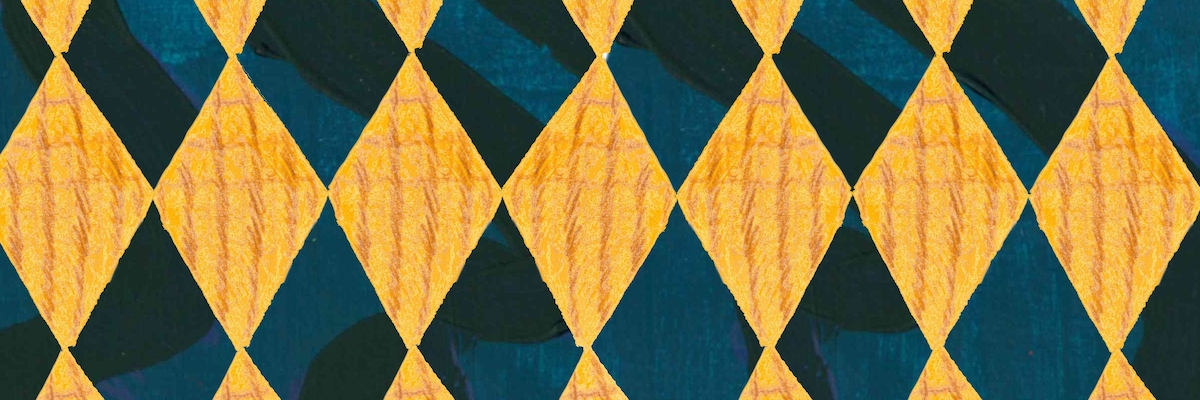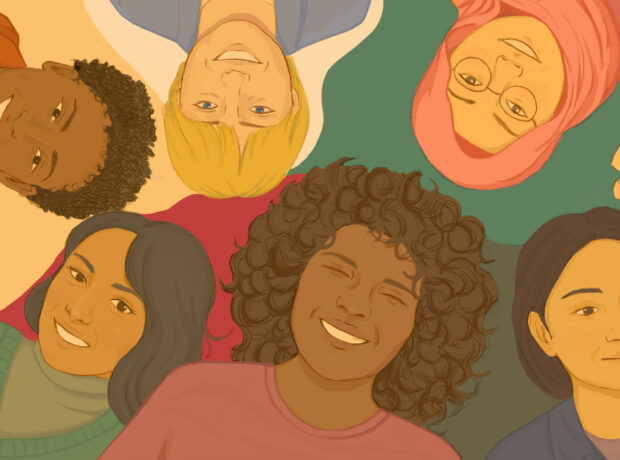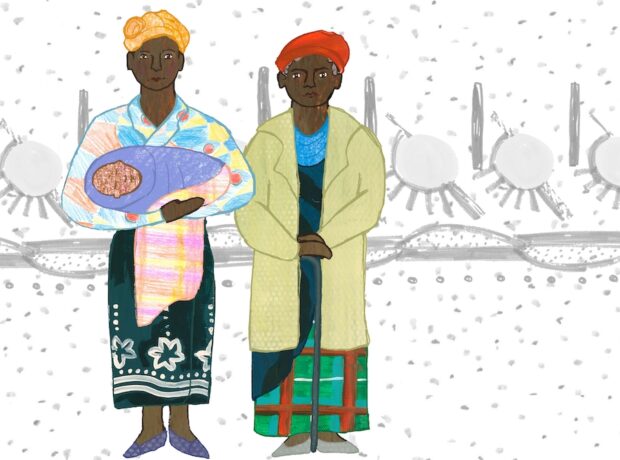Professor Ann Stewart has shared the stories she heard about woman-to-woman marriage in rural Kenya and explained the background to her research. Here she explores the legal concerns of some widows and explains how these marriages can exist within Kenya’s legal framework.
A Kisii chief told us about an unusual case he was handling at the time: “Here is a young woman who got married in a woman-to-woman marriage. She even had children. But then she abandoned this (Kisii) marriage and got married among the Samia (who do not use woman-to-woman marriage).
“Unfortunately, her Samia husband killed her son and she came back here. Now the Samia people want either her or their dowry back. They want the children too. But you see I can’t order her back, nor can I order her to return the children. I cannot also ask her parents to return the dowry. Divorce matters are for the courts. I can only make peace. I have invited elders from both sides to help resolve this matter.”
Kenya is a legally pluralist society, meaning that customary marriages, as understood and practiced within the different clans, are recognised within the formal legal system as long as they don’t contradict constitutional norms, including those relating to equality and human rights. All marriages in Kenya must now comply with the 2013 Marriage Act, which recognises Christian, Hindu, Muslim and Customary unions as long as they conform to appropriate registration procedures.

But courts are remote. The women we met all turned to elders and chiefs to settle any disputes, either within their woman-to-woman marriages or with relatives making claims to property or territory. Maria from the Kuria community said: “I always use the chief to scare them,” referring to relatives who want to “share” her land now she is widowed. And a Kamba focus group member told us: “I reported the matter to the chief. The chief called us and the matter was resolved. In fact, since I reported they have never taken anything else. However, they have refused to return what they took before the chief’s intervention.”
Onyango Ondeng from KELIN, a Kisumu-based NGO, points out that becoming a widow in Africa is a potentially dangerous time for all women, particularly in economically hard-pressed communities where land is scarce.
Woman-to-woman widows are particularly vulnerable. They are dispossessed of their lands by relatives despite their community-based entitlement to it. Members of the extended family who would have expected to inherit property had the woman-to-woman marriage not taken place often bring their claims when the older woman dies, and the younger woman inherits both property and children. They challenge the validity of the marriage, arguing that it is not recognised in their community or that the necessary formalities have not been carried out.
Some of the women that we interviewed from the Kamba community were able to get support from Caroline, a local paralegal worker supported by FIDA, the Federation for Women Lawyers. Speaking about one of these cases, Caroline said: “When she came here, this matter had been thrown out of the court. She came here crying that a prominent man had grabbed her land. I asked the chief to write a letter confirming her marriage to the deceased woman and affirming her right to inherit and took the case back to court.”

Honourable Justice Ojwang has presided over woman-to-woman cases in Kenya’s Supreme Court and points out there have been no formal legal challenges to these marriages based on their lack of constitutional validity. But, as Justice Ruth Sitati, a High Court judge sitting in Kisumu, told us, judges in regional high courts are familiar with these cases as parties with plenty of assets to argue over, often go to court.
The relatives of Monica Jesang Katam tried just that (Monica Jesang Katam v Jackson Chepkwony and another High Court of Kenya at Mombasa Succession Cause No 212 of 2010 www.kenyalaw.org eKLR 2011). There was considerable property at stake in this case including a large house in Mombasa. The Supreme Court held that, according to Nandi customary law, Monica Katam could inherit the property, ruling against the other relatives of the deceased older woman who claimed that Monica was not a wife, but a house help brought in to look after the older woman. This sparked considerable public interest because, although it was a challenge relating to inheritance, it was decided after the introduction of the new 2010 constitution with its extended bill of rights.
This case formed the catalyst for my research. Being a wife gave Monica much more recognition for the care work she had put in over the years than she would have had as a paid worker.

Women take on much of the responsibility for informal household work of caring, cleaning, childbirth and child rearing (given the academic label “social reproduction”). While this work is essential for any society to survive, it is not valued economically. Most activities, such as maintaining a household or ensuring that the values of the society are passed on to the next generation, are not part of national systems of accounting, such as gross national product.
Women have been expected to be society’s carers – of the young, the sick, the vulnerable and the frail. They have done this within the institution of marriage and, increasingly, they do it in the marketplace as domestic workers and social care workers.
Legal frameworks shape how we understand and value care. For example, in the UK the law creates a distinction between a “carer” (who may be able to claim some entitlement within social welfare law because she or he provides unpaid care to another) and a “care worker” (who falls within the domain of labour law because she or he is paid to provide care to another). The way we recognise, value and reward care differs.
Seen in this way, Monica Katam’s claim was that she provided this care and labour as a “wife”. But the relatives claimed she provided it as a domestic worker. Which of these would provide her with greater social and economic security?
The International Labour Office and many others recognise that domestic workers globally are a very vulnerable group. Such work is usually undertaken by marginal groups in society – minority ethnic groups, internal or international migrants – and overwhelmingly by women within these groups.
They have very few legal protections because they live and work in domestic settings, isolated and out of sight. Even where they do attract some right to a minimum wage, for example, these entitlements are often unenforceable in practice. As a domestic worker, neither Monica Katam nor her children would have had a claim to anything when the older woman who she cared for died. She would be treated as a maid with out-of-wedlock children rather than as a mother with social status.

So, what about the older woman? As an older widowed woman without children in a society which relies on families to care for its older members and which has yet to develop a system, or public funding, for social care, who looks after her? As she moved towards the end of her life, she may have received the same care from Monica, whether Monica was a domestic worker or a wife. But community expectations and the investments involved in a customary marriage create a different relationship than that of worker and employer.
Prudence, now widowed and from the Nandi community, saw this clearly: “I used to wash her clothes, cook food for her and generally take care of her wellbeing. Actually, I was playing the role of a wife because she was like my husband. I took care of her like any wife takes care of her own husband.”
When we asked focus groups of older and younger women what they liked about their arrangements, they told us very clearly: “We didn’t have any conflicts; we were very peaceful.”
This is especially relevant in Kenya where there is evidence of high levels of domestic violence, which continues to be socially condoned despite strong efforts by women’s advocacy groups and growing public campaigns to tackle it.
This research confirms the importance of law in shaping how we understand and reward caring in society.
A family law framework can ensure that the carer is able to draw on bequeathable wealth, and carrying out caring responsibilities transforms the carer into a beneficiary. But if the same “job” is undertaken within an employment law framework, the carer as a domestic worker receives whatever wage she commands but nothing else. The law treats doing the same job differently, depending on whether you do it as a wife or whether you do it as a paid worker.
For now, woman-to-woman marriages are providing older women with support within a recognised familial setting and social status in their communities. There is considerable outward migration from rural areas, particularly by younger family members. And expectations are changing. More women are in paid employment, and older people have far fewer support mechanisms to call upon in rural areas.
Africa is the youngest continent so there is a policy focus on youth. But it is ageing quite rapidly due to improvements in healthcare and prosperity more generally. This is a source of celebration – a sign of success. Who is going to look after the growing number of older Kenyans?
While there is a growing awareness among international and national policy makers that there is a need to develop long-term care policies, there is no equivalent of a social care workforce and little public appetite for obtaining care from a stranger outside of the family. Ask people in rural areas who they think should look after them and they consistently say “my wife, my daughter-in-law, my grandchildren – my family”.
Artwork by Beatrice Florence Taylor
Read more about this story:



